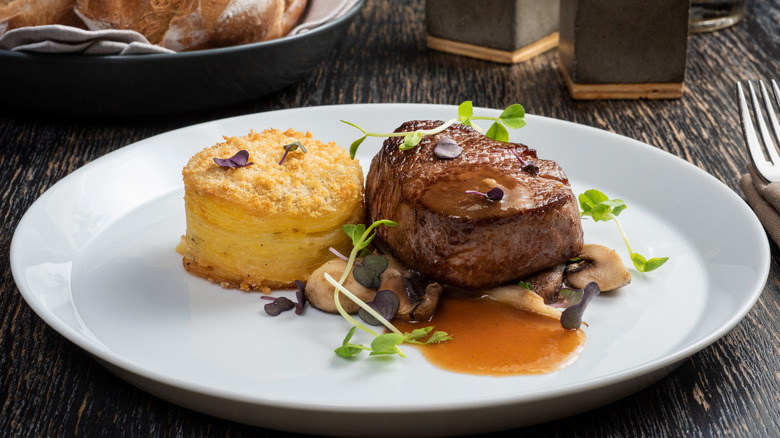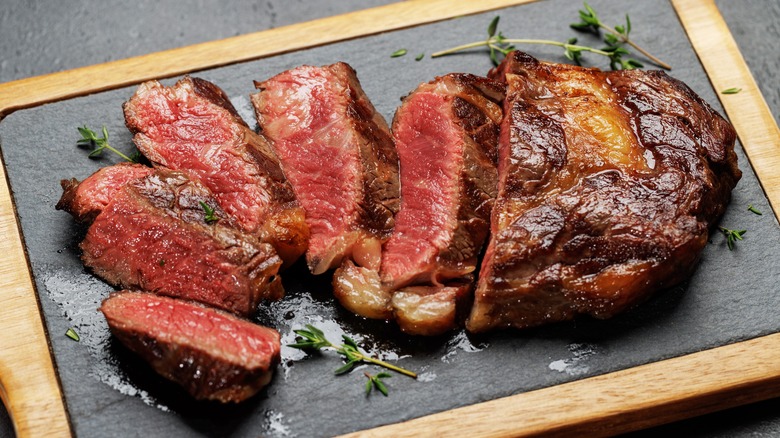Why You Should Start Lacquering Your Steak
As you might guess from the name, lacquering, when used as a culinary term, refers to the highly glossy finish that you sometimes see on meat. That shiny glaze comes from a sticky, sugar-enhanced sauce, which is used to coat the meat as it cooks, and it's often used on duck, chicken, or pork dishes. But it works just as well when cooking different cuts of steak.
Lacquering adds robust flavor as well as a glossy finish, thanks to ingredients that might include a variety of savory, sweet, or sour elements. These are simply simmered and reduced down in a pan to create a tasty glaze. Umami-rich notes might come from soy or fish sauce, with wine vinegar adding tanginess. You could even brush on ready-prepared sauces, such as teriyaki. Meanwhile, the sweet ingredients (sugar, honey, or syrup) caramelize as the exterior of the meat cooks to create the lacquered appearance and consistency — it's why Alton Brown uses sugar for ridiculously crunchy bacon.
When it comes to steak, lacquering produces a flavorful crust on the outside of the rich-tasting beef. You can apply several layers of sauce during the final stages of cooking, which will start to harden thanks to the heat. The result is an incredible depth of flavor, as well as a beautifully burnished finish that contrasts especially well with the tender, juicy interior of the steak.
The best cuts of steak for lacquering
If you're grilling lacquered steak, choose a thicker cut — around two inches is ideal. A well-marbled ribeye works well, as it's richly flavored, or you could try sirloin. Season the steak with salt, and start cooking and flipping it as usual on the grill, turning it to 90- and then 45-degree angles if you want to get dazzling crosshatch marks on the meat. Lower the heat so that the sugary sauce doesn't burn, and then brush the mixture onto each side of the steak every minute or so as you flip it. Continue flipping and glazing until you get a rich dark crust, and the meat is cooked to your liking.
You can also lacquer other cuts of beef, such as short ribs. Try using the lacquer mixture as a marinade for the beef before cooking it in stock — the sweet, savory, and aromatic ingredients will produce a flavorful coating as the meat slowly braises in a low oven. Alternatively, for a much faster meal, use a lacquer sauce to marinate thin strips of filet before quickly frying them in a hot wok. Add any leftover marinade to the pan at the end to further glaze the meat.
Lacquering also works well on meaty fish if you fancy switching proteins. You'll find the glossy finish on unagi, or eel glazed in barbecue sauce, in Japanese cuisine. But it also works well on tuna steaks or with salmon.


